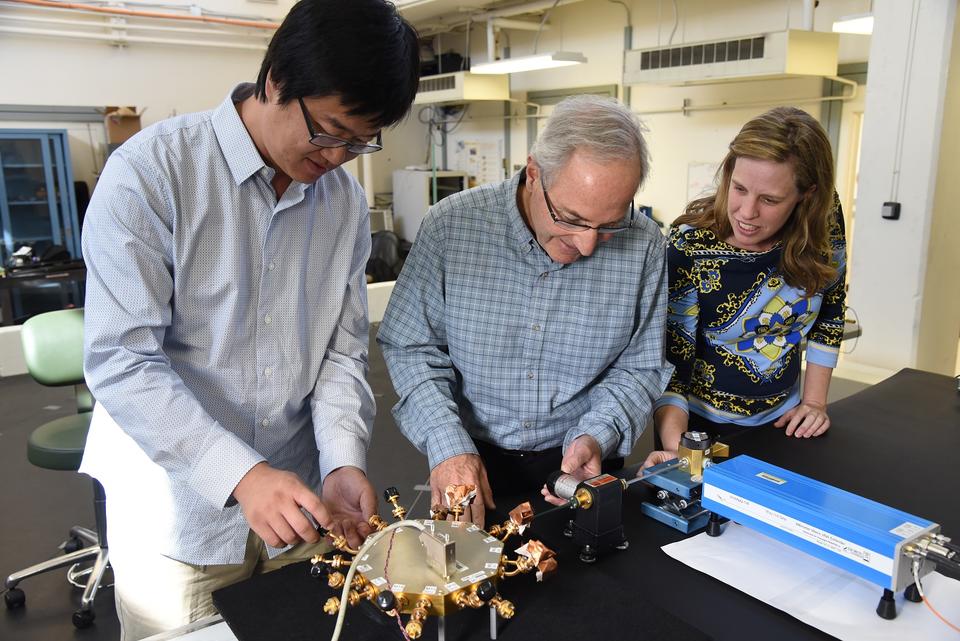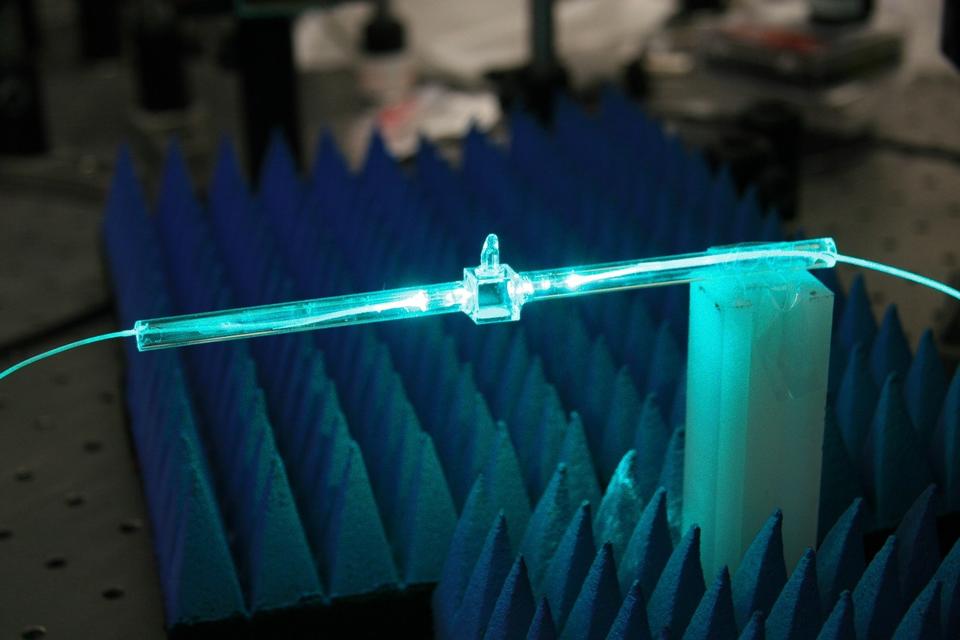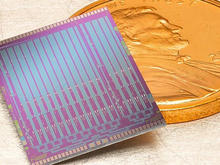Communications
Telecommunications companies are taking the plunge into 5G, which broadcasts wireless signals at higher electromagnetic frequencies than used for handheld devices before. Industry is expected to soon expand into even higher frequencies to break free of the cluttered bands now available for communications.
In addition, the explosion of communications devices and systems — and risks to their operation — increases the need for backups to GPS, financial services and many other systems that depend on high-speed communications.
NIST researchers are developing a new generation of tools and methods to meet these challenges. Opportunities for industry exist not only for developing new communications technologies, but also for testing and analyzing them to ensure they work properly.

As transmission frequency increases and the spacing between bits of data shrinks below a fraction of a billionth of a second, it becomes more difficult to ensure that the receivers that capture and analyze the waveforms of the transmitted signal can process them accurately while keeping up with the deluge.
NIST researchers are developing technologies for producing near-perfect, superfast electromagnetic waveforms to calibrate the devices used in such high-speed communications. New versions of reference signal generators are essential to accurate data transfer for communications, aerospace and defense, avionics and more.

NIST has already created the world’s best quantum-based chip-scale voltage and frequency standards, which are used for developing and testing communications signals and devices. Now NIST teams are working to dramatically extend the instruments’ reach to higher voltages and frequencies, and ultimately to make them readily usable by customers at their own sites.

NIST’s frequency combs, a Nobel Prize-winning technology, are nicknamed “rulers for light.” Products incorporating frequency combs can be used for measuring and analyzing high-data-rate communications for 5G and beyond.
Last but certainly not least, NIST is at work on a groundbreaking advance in portable ultra-accurate timekeeping. The faster the “tick” rate of a clock, the more precisely it can measure time intervals. NIST’s celebrated chip-scale atomic clocks tick at microwave frequencies, billions of cycles per second. Now scientists are miniaturizing an “optical clock” design they pioneered that operates at the frequency of visible light — 100,000 times higher. Many experts believe that optical clocks will eventually become the world standard for time.

